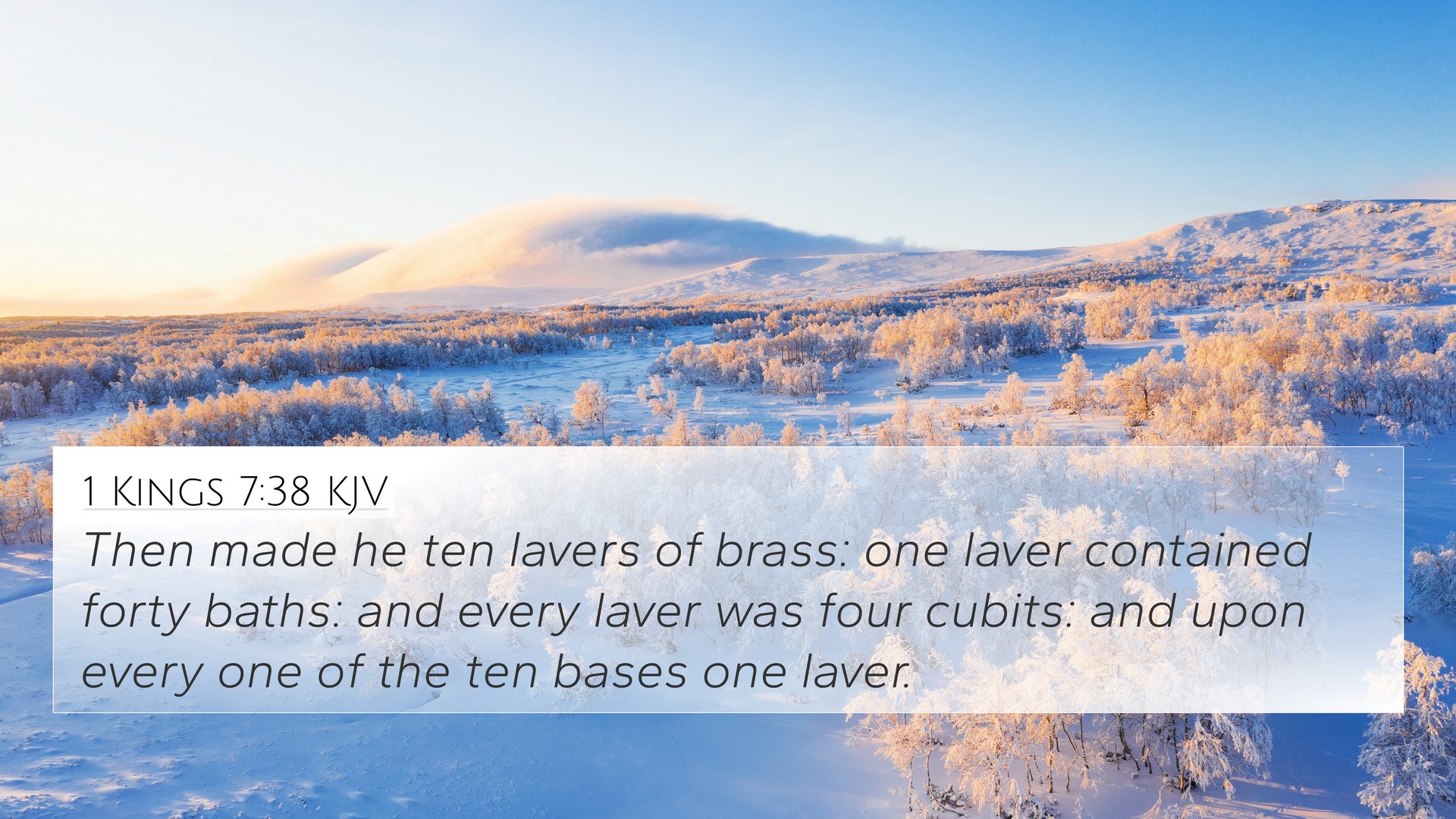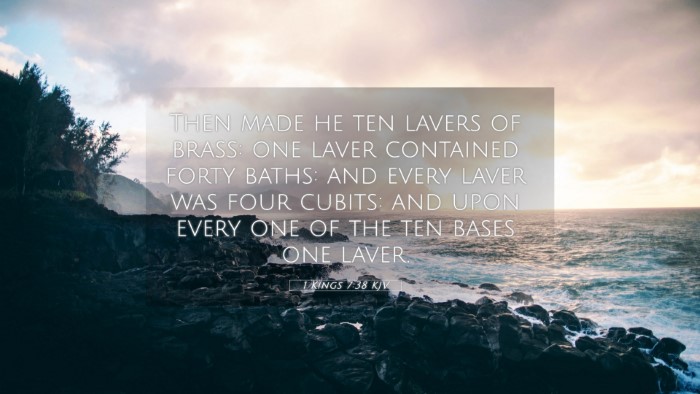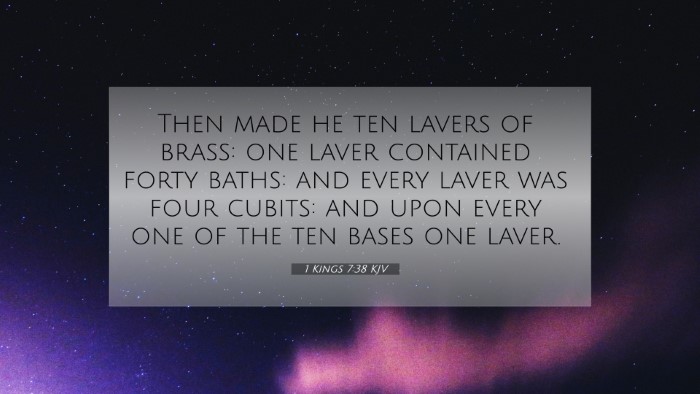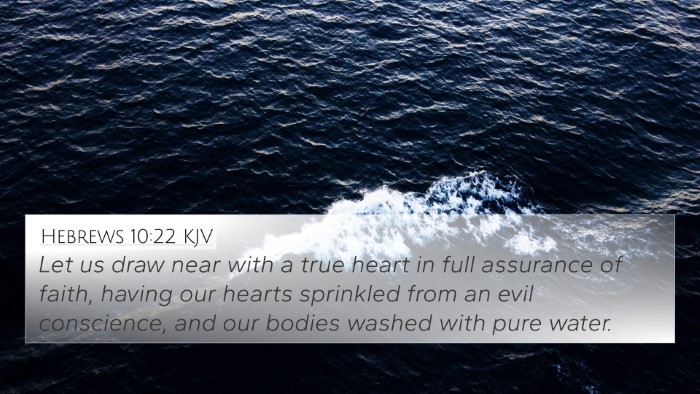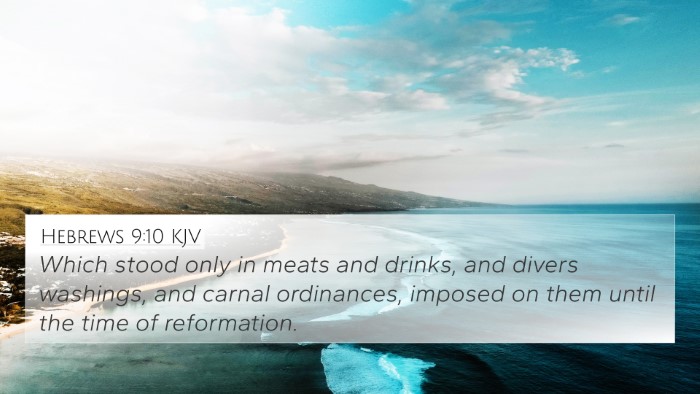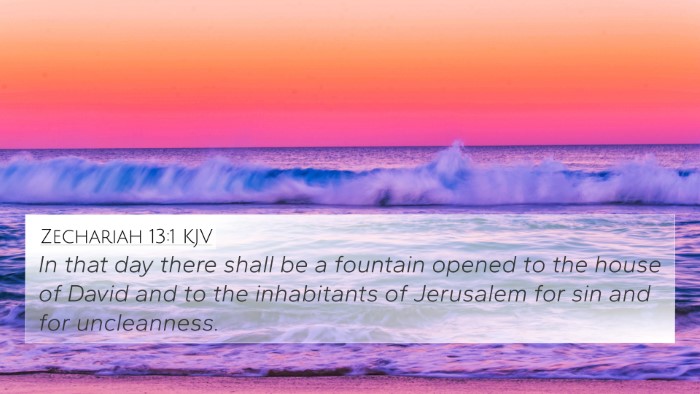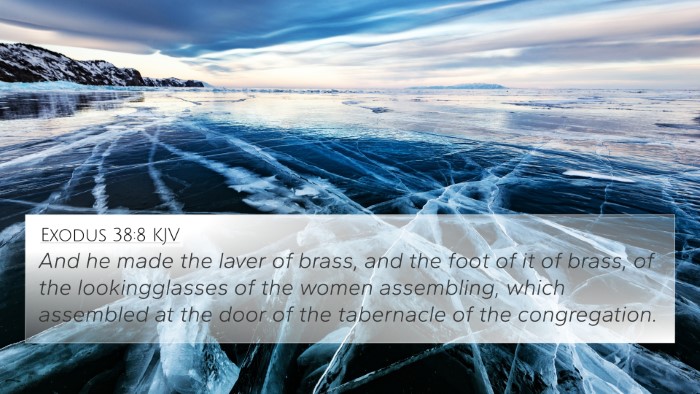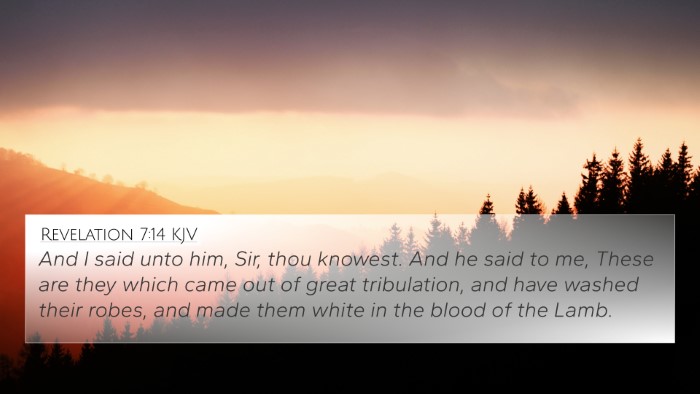Understanding 1 Kings 7:38
1 Kings 7:38 narrates the specifics of the construction of the large basin known as the "molten sea," which Solomon had built for the temple's service. The verse states,
"And he made ten lavers of brass; one laver contained four thousand baths: and he put five lavers on the right hand, and five on the left, to wash in them: such things as they offered for the burnt offering they washed in them; but the sea was for the priests to wash in."
This text offers significant insights when viewed through the lens of biblical commentary.
Commentary Insights
The construction of the brazen lavers was a crucial aspect of the temple's design, and it underscores various theological themes:
- Significance of Ritual Cleansing: The lavers served a practical purpose in the ceremonial purification of the priests, indicating the importance of holiness in approaching God.
- Symbolism of Water: Water often symbolizes purification, life, and the Holy Spirit throughout the Scriptures. The usage in the temple illustrates the necessity of these elements in worship.
- Capacity and Abundance: The mention of "four thousand baths" reflects God's provision and the ample resources dedicated to His worship.
- Divine Order in Worship: Having the lavers organized on either side of the ceremonial area illustrates the necessity of structure in worship settings.
Bible Verse Cross-References
Several other biblical passages provide further context and comparative analysis to enhance understanding:
- Exodus 30:18-21 - Details the instructions for making a bronze basin to wash away sin and maintain purity in worship.
- 2 Chronicles 4:6 - Offers a parallel account regarding the size and purpose of the lavers, confirming their role in the temple.
- Hebrews 9:10 - Discusses the rituals and physical signs used in the Old Covenant that point toward deeper spiritual truths.
- John 13:5 - Reflects on the act of washing as a demonstration of humility and service, echoing the temple practices reinstituted by Jesus.
- Psalm 51:2 - A plea for purification, highlighting the need for God's cleansing in the believer's life.
- Matthew 27:51 - Describes the tearing of the temple veil, indicating the open access to God and the fulfillment of ceremonial laws.
- Jeremiah 2:13 - Refers to God’s people forsaking Him, the fountain of living waters, to hew out broken cisterns, contrasting the purpose of the lavers.
Connections Between Bible Verses
The verses cited do not merely hold individual significance, but they create a web of connections throughout scripture:
By examining cross-references, one can find thematic correlations that depict God’s requirement of holiness, the significance of water in scriptural narratives, and the ultimate revelation of grace through Christ.
Conclusion
The detailed imagery and measurements provided in 1 Kings 7:38 symbolize profound spiritual truths for adherents. Through the use of large lavers for purification, the text emphasizes the importance of being cleansed before engaging with the divine. Comparative analysis and thematic connections drawn from other scriptures only enrich one’s understanding of God’s intentions and provisions.
